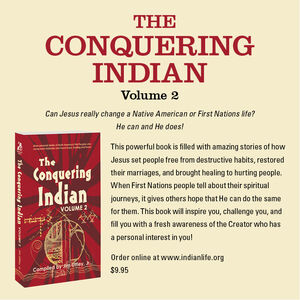Connecting the dots of Aboriginal injustice
Last updated 8/1/2015 at 1:36pm
My husband asked me to go on a road trip with him a few weeks ago. I was mostly happy but a tiny bit terrified. He wanted us to go to Sioux Lookout, Ont., for the weekend to visit his old residential school.
Worst-case scenarios littered my thoughts. Would he show me unmarked graves of school children? Break down into a shuddering lump on the ground, or share stories that would give me nightmares?
A few years back, I went with my uncle to support him when he had to recount his abuses in detail to his lawyers. It was part of his residential school claim. The experience was traumatic for both of us.
My husband counts himself lucky. His parents—both Cree Indians and residential school survivors—worked at the residential school. His dad, the principal, was an Anglican priest. They lived at the school for two years; he and his classmates were bussed to school in town. But unlike his classmates, he went home to his parents every day.
There’s something soothing about a road trip through kilometers of trees and the rocky Canadian Shield. The closer we got to Sioux Lookout, the calmer I felt. My husband was sharing his past with me and our four-year-old daughter.
I used to think when it came to residential schools I was on the outside looking in. Maybe my husband thinks of it that way, too. A casual observer of the aftermath; someone linked to it by family but still unscathed.
My education about residential schools as a child was little to nothing. Nobody talked about it. Ever.
I was four when I first heard about them. My great-grandpa Alphonse told my uncle he wasn’t able to join the army because a nun threw a chalk eraser at him for talking in class. The blow broke his eardrum and made him deaf in that ear.

That was it.
But over the years, I’ve learned a few things.
I’ve learned fancy words such as intergenerational trauma, post traumatic stress disorder, decolonization, and lateral violence. I’ve come to know their meaning as a key to understanding my family and my people.
I’ve also finally accepted the fact I was not an untouchable. That some of the abuses I’ve suffered in my life are linked to these schools. And with that knowledge I’ve been able to move on and forgive.
I learned from my uncle, who passed away at 54 two years ago, that no matter what goes wrong in your life, or any mistakes you make, it’s never too late to try to make things right.
The best lesson my great-grandfather taught me when I was a kid was to listen.
So, that’s what I did as we drove around that windy little peninsula where my husband’s childhood memories still play hide-and-seek among the trees. The old school is gone but he told stories while we took pictures of the shoreline, the memorial, and the train tracks the kids who ran away went down.
Did some kids never come back? I didn’t ask.
He laid down tobacco for a schoolmate who committed suicide years later, and then we left.
It’s the past, it’s done. Get over it.
Canadians who say it’s time for residential school survivors to stop telling their stories, or “we’ve heard enough” are full of crap. This isn’t over.

Look around. The residential school experience is alive and well.
Until you can look at today’s homeless people and see the connection to those schools, this isn’t over. When you can read about the crisis our child welfare system is in and understand it is the outcome of residential schools, this isn’t over.
Until we start to do something about the abuses, poverty and racism that groom our girls into missing and murdered women, this is far from over.
If you don’t see the connections, you need to keep listening.
It is most certainly not about blame, but seeing the relationship between what happened then and what’s going on now.
We need to own up to our history—and to Canada’s role in perpetrating a “kinder” than most, but still ghastly, genocide on Aboriginal children.
Colleen Simard is a mom of two who lives in Winnipeg, Manitoba’s North End.
Republished from the Winnipeg Free Press print edition June 1, 2015. Used with permission of the author.


